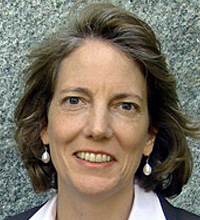Estate and Wealth Planning for Family Enterprises: Reality — not myth — as the proper starting point
The 2015 FFI Global Conference theme of “myths and realities” provides an excellent opportunity to focus attention on how best to advise family enterprises for the long-term success of the family and the enterprise. There are many myths to be found in the family enterprise field. In my experience, the ones that have the greatest impact lie in the assumptions that form the starting point for wealth and estate planning for founders and stakeholders of family enterprises.[i] These myths are primarily held by lawyers, accountants and financial advisors as they develop plans for their clients. At the same time, they are often shared by, or can become troublesome for, advisors such as family business consultants from other professional backgrounds. As the field converges, and the gaps between advisory disciplines are reduced, it is helpful for family enterprise advisors from all disciplines to be aware of these foundational myths. This article identifies some key myths that drove planning in the past and are still prevalent today.[ii]
Myth 1: The Family Business as monolith. In family enterprise parlance, it is still common to refer to “family business” as though there is a single business for each family. However, the reality today is that operating businesses, whether a family business or not, do not stay static for long before morphing into new forms. The original operating business may start new divisions, sell off others, and merge with external businesses in ways that transform it away from the original operations. In addition, tax, trust and corporate structuring often lead to the creation of several levels of entities that directly or indirectly own the operating business. This reality must be taken into account for planning purposes. Just as the term “family enterprise” (that is, one or more operating businesses, investment funds, trusts and charitable endeavors owned or controlled by a single family) is a more accurate term than “family business,” advisors must acknowledge the myth of a family business as monolith and focus on the reality of complex holding structures and multiple operating entities.
Myth 2: Sale of the Family Business is failure. Despite rapid evolution of businesses today, and the reality that family enterprises are becoming the norm, many an article, conference, and conversation about family enterprise start with the myth of “failure” as reflected by the sale of a family business. The inter-generational failure statistics are repeated often, even while they are being questioned through more recent studies.[iii] This assumption is at the core of estate and wealth planning, especially for family enterprise founders. Trust agreements often prohibit sale of a family business, or at least relieve the trustee of the duty to diversify so that the family business can be held in trust. Provisions forcing the retention of the business can be so inflexible that they can have adverse consequences for the family and enterprise. Provisions enabling departure from the duty to diversify are far better, but not a panacea. A mandate, even if unspoken, to keep a business intact can become quite troublesome; a little flexibility can go a long way to help the family over the long run.
Myth 3: “It’s all about minimizing taxes.” It is entirely logical that tax lawyers should assume that reducing taxes is the client’s primary objective. However, reality shows that a family enterprise founder, or shareholder, often has a mixture of objectives, of which tax planning might not be the most important. Founders are often focused mainly on balancing management succession with family harmony. A shareholder might appreciate the tax benefits of inter-generational share transfer but might also desire to cash out to obtain more freedom. Family dynamics usually make it difficult to express these competing demands, and loyalties, openly. A tax attorney or wealth advisor who assumes that taxes trump everything else may not be able to “hear” the client’s unspoken concerns. At worst, the advisor could be setting up the family for future conflicts that will cost far more than the tax savings at hand. The reality is that a client’s objectives cannot be distilled down to a single criterion.
Myth 4: “I can do it myself.” A lawyer who takes on an estate planning assignment for a family enterprise founder or stakeholder often feels no need to include any other advisor in the process. Indeed, the attorney-client relationship can preclude dealing directly with other parties, who may have competing interests. So long as the client provides details of assets and liabilities, including the family enterprise, then the lawyer often feels that all the groundwork has been done to develop a plan in accordance with the client’s wishes and goals. However, a family enterprise is a complex system that requires a multi-disciplinary team. Attorneys and accountants will need to find ways to include other professionals to genuinely meet the client’s objectives in ways that still respect professional duties. Advisors who do not have such restrictions must also find ways to encourage collaboration while respecting where the lines are drawn.
Myth 5: “Silence is golden.” In the past, estate planning often started and ended in the attorney’s office. Confidential conversations were recorded through wills, trusts and other documents that were filed away for later discovery upon the client’s demise. The myth was that this silence would foster the client’s needs and not unduly disrupt the family. Reality has borne out this assumption for the falsity it represents. Families with shared assets in a family enterprise must have open communication not just about what is happening today but what might happen in the future. Not only will a business work better if a successor has time to adapt to a new role, but also the overall family enterprise will have the opportunity to address, and potentially resolve, conflicts before they arise. While there may be very good reasons to keep certain information and documentation secret, it is not always the case that silence is golden.
There are many good reasons that the myths described above, and others, have developed in the field. Indeed, they have often served as useful starting points for wealth and estate plans. Looking forward, however, family enterprise advisors from all disciplines would be well advised to explore where the line between myth and reality is drawn. By starting with reality, future planning will be more likely to improve outcomes for family enterprises.
[i] See Angus, Patricia M., “Reality Trumps Myth: The Pritzker Family Enterprise Story.” Trusts & Estates, March 2014, based in part on Angus, Patricia M., Pritzker Family Enterprise: A Family Governance Case Study,” Columbia Caseworks #140412 (December 4, 2013).
[ii] See also Building Bridges column at www.wealthmanagement.com/author/patricia-angus.
[iii] https://ffipractitioner.org/?p=2438/?page=2011LongevityStudy. 2011 Longevity Study (FFI)
About the contributor:
 Patricia Angus is the founder and CEO of Angus Advisory Group LLC, a philanthropy and family governance consulting and education firm. She is an adjunct professor at Columbia Business School, where she teaches family enterprise and wealth. Patricia can be reached at [email protected].
Patricia Angus is the founder and CEO of Angus Advisory Group LLC, a philanthropy and family governance consulting and education firm. She is an adjunct professor at Columbia Business School, where she teaches family enterprise and wealth. Patricia can be reached at [email protected].




